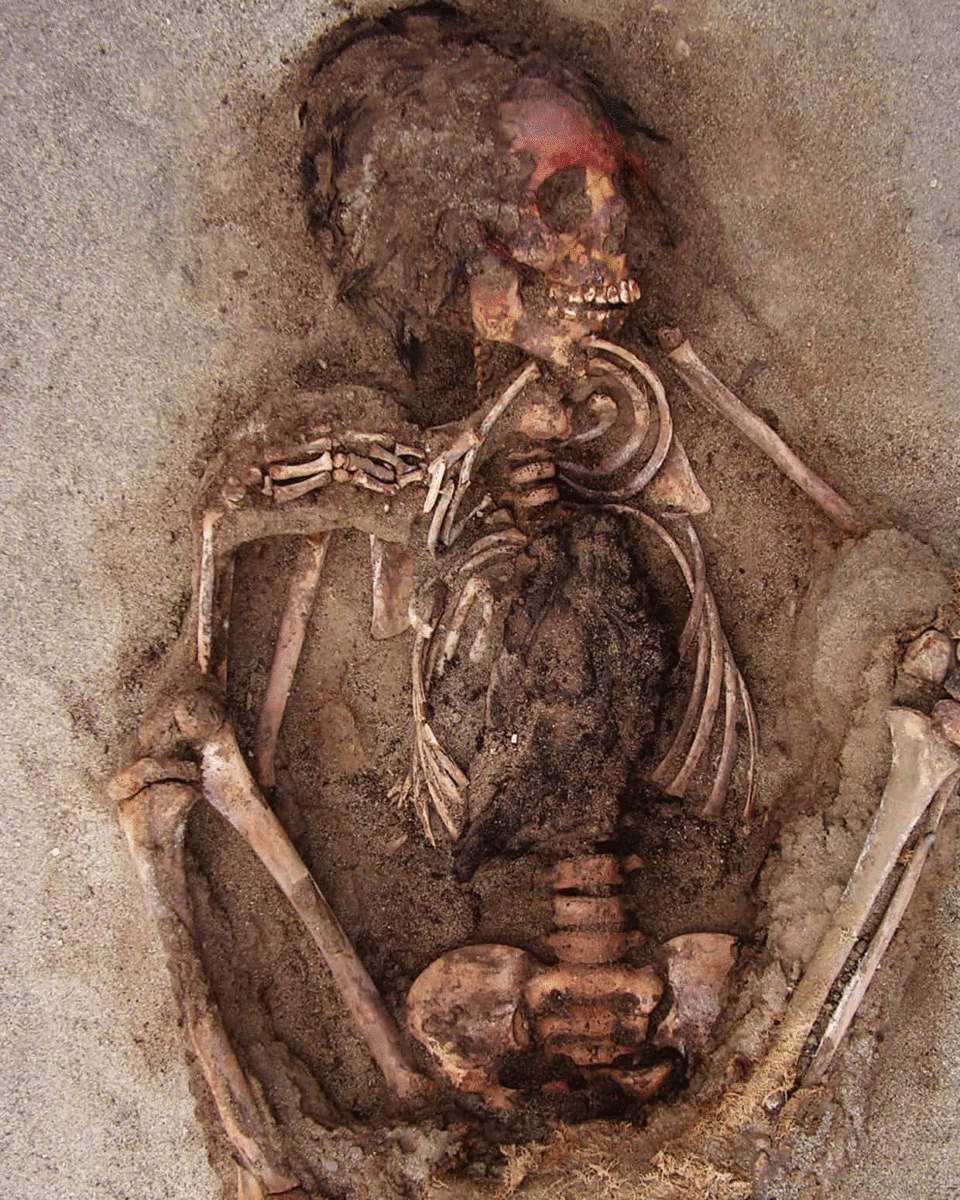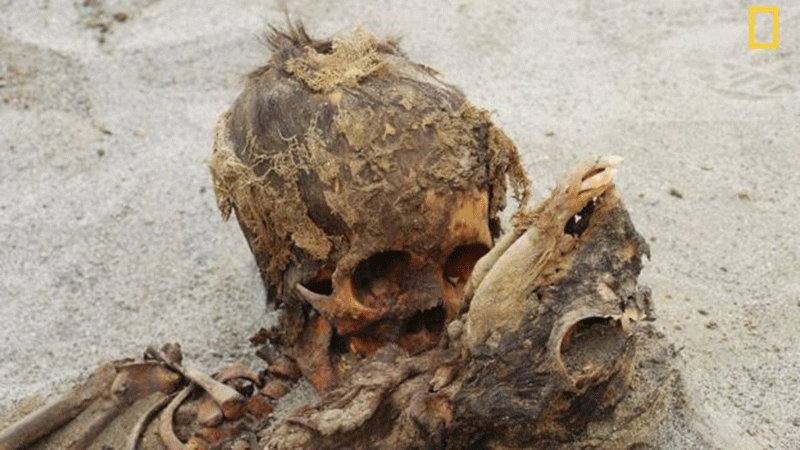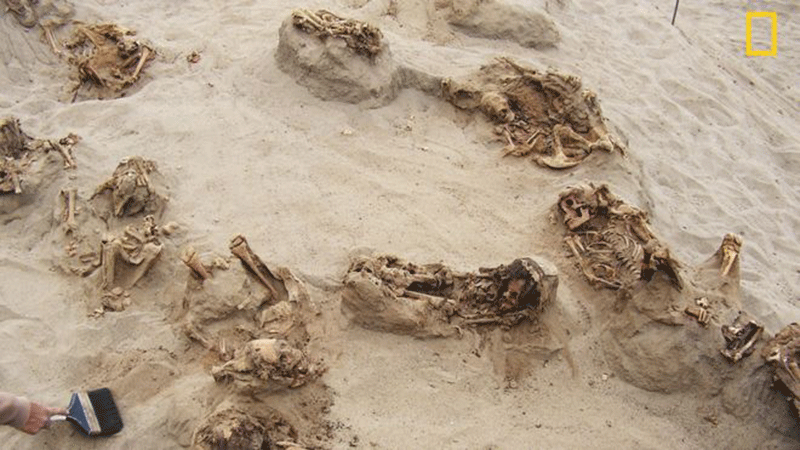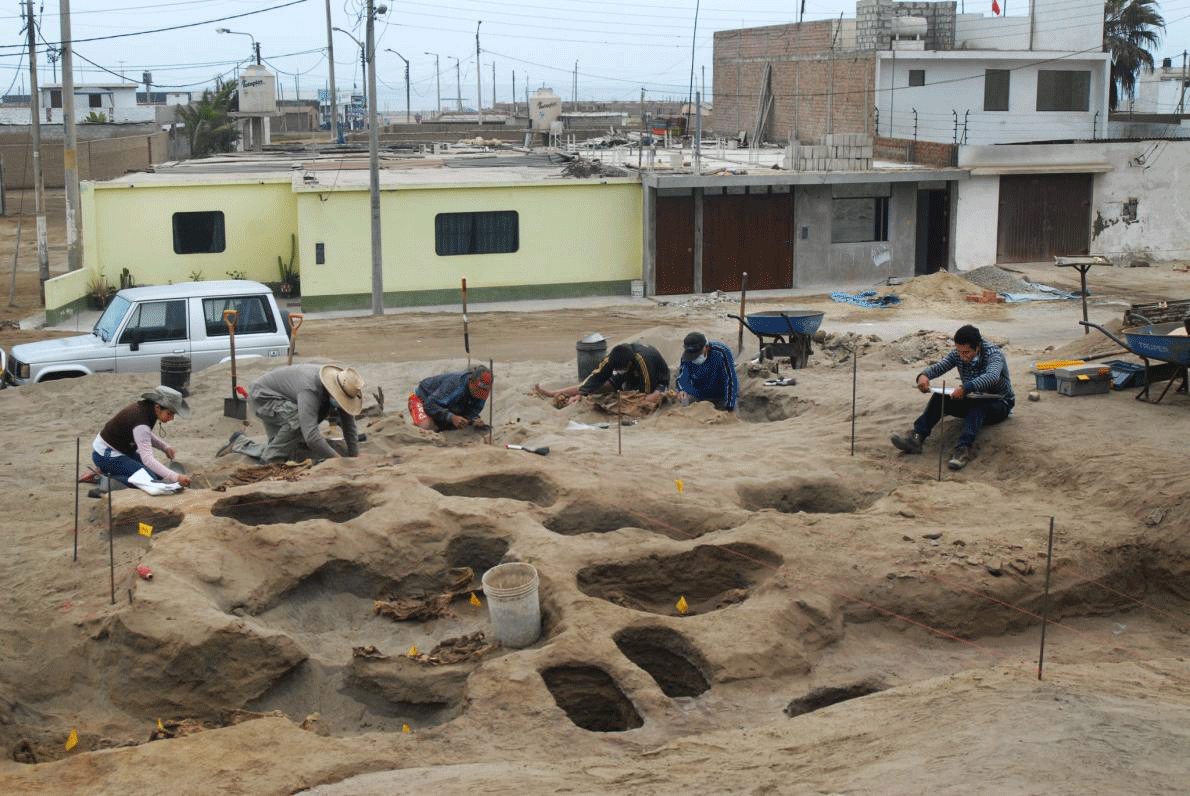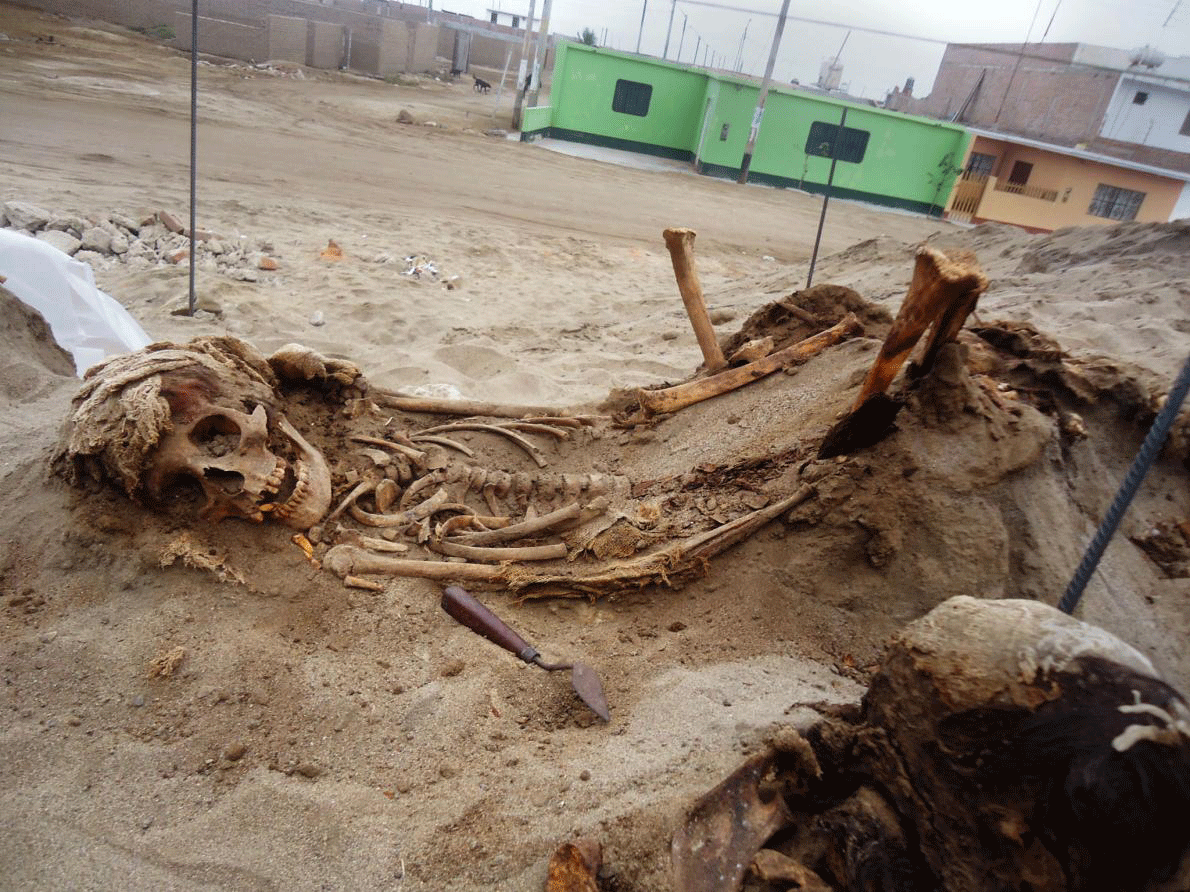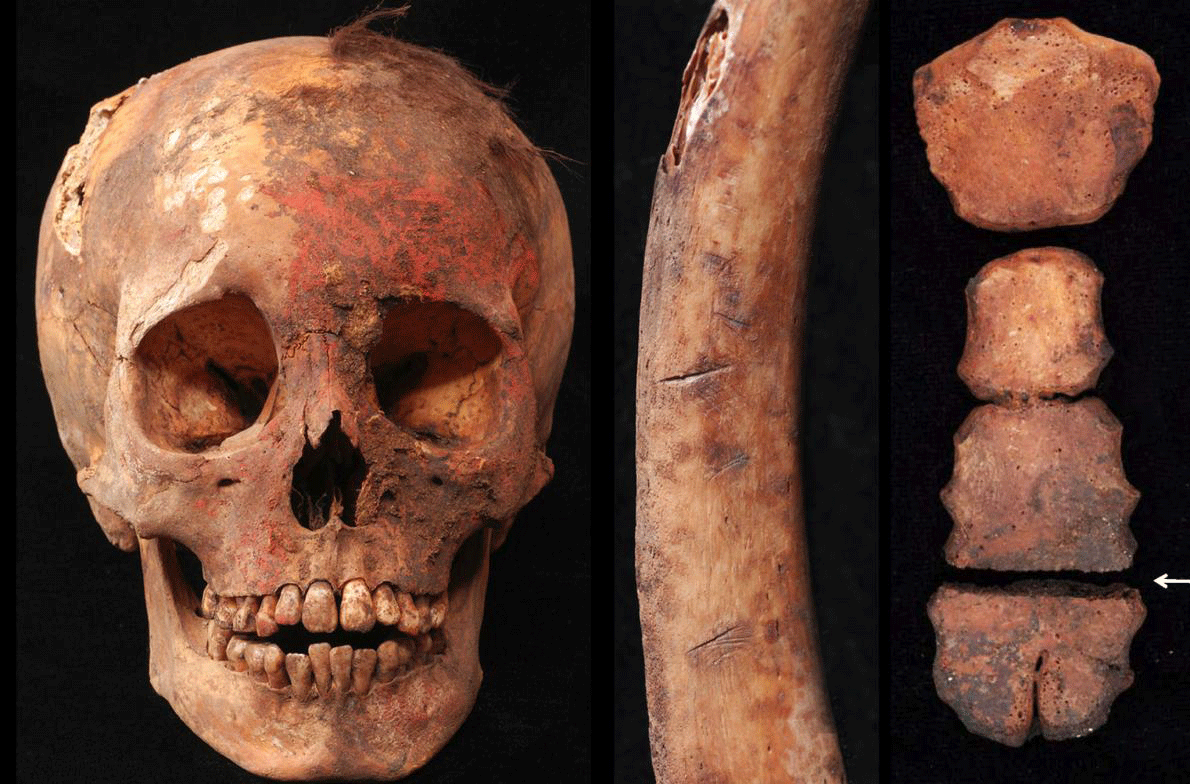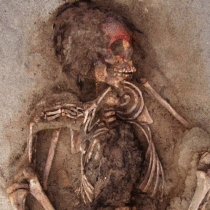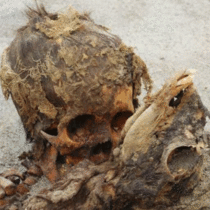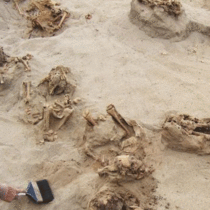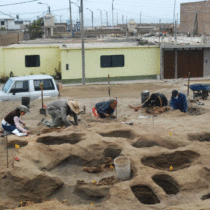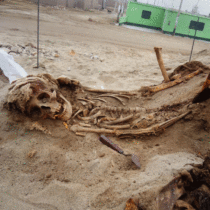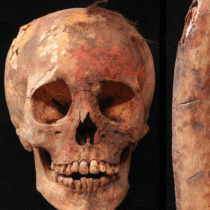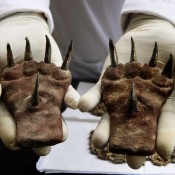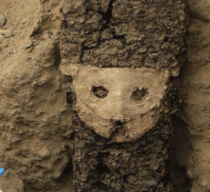The Las Llamas site in northern Peru yields evidence of the world’s largest ritual child sacrifice case about 550 years ago. The findings were published last Thursday by National Geographic, which co-financed the research.
Las Llamas is located near Trujillo, and it was built by the Chimú empire. So far archaeologists have found that 140 children 5-14 years old, mostly 8-12, were buried at the site along with 200 young llamas, which seem to have been sacrificed on the same day, based on the evidence. The children were buried facing the sea and the llamas facing the Andes mountains. Rope and textiles found in the burials are radiocarbon dated to between 1400 and 1450.
Footprints found at the site, probably of the children, indicate that they had marched to the site of the sacrifice from Chan Chan, the ancient Chimú administrative center about 1.5km off Las Llamas.
Researchers believe the children were sacrificed as part of a ritual against the floods caused by El Niño on the Peruvian coastline, as an offering to the gods, an assumption further supported by the layer of mud found during excavations, probably a result of severe rain and flooding. They were the most important thing in the society at the time, since they represented the future, according to Gabriel Prieto, archaeology professor at the National University of Trujillo in Peru, leading the excavation with John Verano of Tulane University. He added that the llamas were very important since the people inhabiting the area at the time didn’t own other valuable assets or animals, so they were crucial for the economy.
According to John Verano the children bore lesions on their breastbones, a sign suggesting the use of a ceremonial knife. The state of the ribcages show that the children’s hearts were removed.
The discovery is very important because although scientists had come across reports of large-scale sacrifices of children in Peru there had not been concrete evidence before, so they could not be sure whether the reports were true or exaggerated accounts, said Jeffrey Quilter, director of Peabody Museum of Archaeology and Ethnology at Harvard University. Now a team of scientists under his lead will analyse DNA samples from the remains to see if the children were related and from which areas of the empire they came from.
